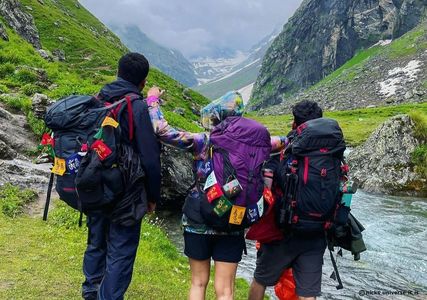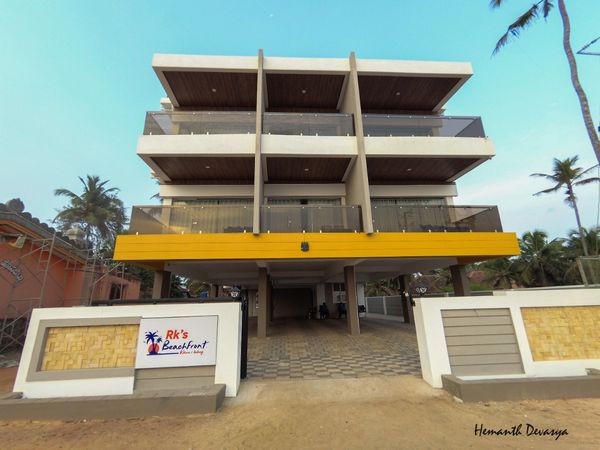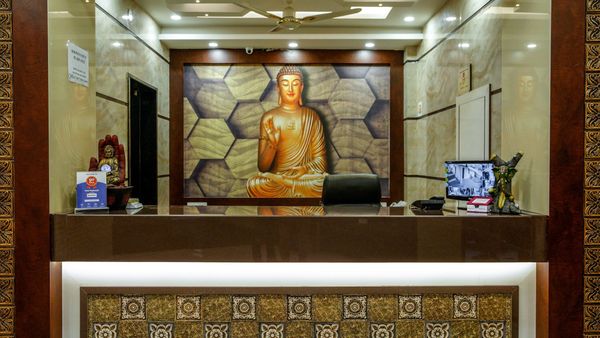Walking Through the Clouds: My Life-Changing Trek to Hampta Pass
 Rohit Sen
24 May, 2025
9 mins read
75
Rohit Sen
24 May, 2025
9 mins read
75

I’ve always been someone who looked at mountains in photographs and thought, “One day.†That “one day†finally came when life started to feel too noisy, too fast. I needed a pause, a reset — and the Hampta Pass trek felt like the perfect getaway. Located in the lap of Himachal Pradesh, this trek promised green valleys, snow-covered passes, and even a visit to the magical Chandratal Lake. The idea of walking from the lush Kullu Valley to the barren beauty of Lahaul sounded like walking through two different worlds. And so, I packed my backpack and booked a guided trek to Hampta Pass.
Landing in Manali: The Gateway to Adventure
Manali was where my journey officially began. This popular hill town is not just scenic but also the starting point for most Himalayan treks in the region. I arrived a day early to acclimatize and meet my group. The air was cool, pine-scented, and buzzing with other trekkers preparing for their own adventures.
Meeting the group was both exciting and a little intimidating — some had done treks before, while others, like me, were on their first real Himalayan expedition. But that nervous energy quickly turned into excitement as we discussed the upcoming Hampta Pass itinerary over hot momos and masala chai.
From Jobra to Chika: Where Forests Whisper and Rivers Sing
The trek started with a short but bumpy ride from Manali to Jobra, the trailhead. As we walked through the dense deodar and maple forests, sunlight peeked through the leaves, and the sound of the Rani Nallah stream followed us like a lullaby. It felt like entering a different world — quieter, cleaner, and kinder.
This stretch was relatively easy, and it gave us time to adjust to the rhythm of trekking. We reached Chika, our first campsite, just as the sky turned golden. Surrounded by mountains and with the river flowing beside us, it was the kind of setting that made me forget all my notifications back home. That night, wrapped in layers, I stared at a sky full of stars and felt something shift inside me. The kind of peace you can't find on city streets.
Chika to Balu Ka Ghera: Trekking Through Nature’s Canvas
Day two tested my legs and lungs more than I expected. The trail from Chika to Balu Ka Ghera was a slow, uphill climb with several water crossings that added thrill and chill to the journey. I had to hop across icy streams and walk through rocky patches surrounded by wildflowers in bloom. I couldn’t believe something so beautiful could exist outside of postcards.
The altitude was starting to rise now, and so were my doubts — “Will I make it to the top?†But the encouragement from our trek leader and the jaw-dropping scenery kept me going. Balu Ka Ghera, meaning “bed of sand,†is a flatland surrounded by snow-covered mountains. It was windy, cold, and stunning. We set up our tents, warmed our hands with hot soup, and watched the sun set behind the peaks. That night, I slept lighter, my dreams filled with thoughts of the summit ahead.
Balu Ka Ghera to Hampta Pass to Shea Goru: The Day I Conquered Myself
This was the big day — the one that would take us to the Hampta Pass summit at 14,100 ft. We started before sunrise. The path was steep, slippery in places, and blanketed in snow. The cold bit into my fingers despite gloves, and I had to dig deep into my reserves of willpower.
But something magical happened as we climbed. The higher we went, the clearer the air felt. I could see miles of untouched white landscape stretching ahead. And then, after hours of relentless trekking, we made it. Standing on Hampta Pass was a moment I’ll never forget. Behind us lay the green valleys of Kullu, and ahead — the stark, otherworldly views of Lahaul. Two landscapes, one trek. I felt like I had crossed a secret threshold few get to witness.
The descent to Shea Goru was steep and tricky, but I was too euphoric to care. That night, we camped on a flat meadow surrounded by snow ridges, sharing stories, laughter, and the glow of headlamps in the dark.
Chandratal Lake: A Moonlit Finale to an Epic Journey
Our last trekking day took us down to Chatru, from where jeeps drove us to the famous Chandratal Lake — the crown jewel of this entire experience. The drive itself was thrilling, with narrow mountain roads and wild streams to cross.
And then, there it was — Chandratal, the Moon Lake. I remember getting goosebumps the moment I saw it. It was the bluest water I had ever seen, nestled between rugged brown mountains. The reflection of clouds danced on its surface like a painting in motion. I sat by the lake in silence, thinking about how far I had come — not just in kilometers, but in confidence and calm.
Final Thoughts: What the Mountains Whispered to Me
The Hampta Pass trek wasn’t just about reaching a destination. It was about everything I discovered along the way — the strength in my legs, the courage in my heart, and the stillness in my mind. I came back with blisters on my feet but peace in my soul.
If you’re someone looking for a Himalayan trek that offers drama, beauty, and transformation, trek to Hampta Pass without hesitation. Whether you're a first-timer or a seasoned hiker, this route will surprise you, test you, and, most importantly, change you.
FAQs
Q1: How long is the Hampta Pass trek?
The trek usually spans 5 days and covers around 25–28 kilometers. Each day offers different terrains and experiences.
Q2: What's the best time to visit Hampta Pass?
Mid-June to early October is ideal. July and August have more snow and blooming flowers, while September offers clearer skies.
Q3: What is the Hampta Pass trek difficulty level?
It's a moderate trek — doable for beginners with decent fitness. Be ready for altitude and cold weather.
Q4: Is Chandratal Lake always part of the itinerary?
Yes, but only if weather permits. Heavy rain or snow can make the roads inaccessible.
Q5: What are must-haves for the trek?
Good trekking shoes, warm clothes, a rain jacket, power bank, snacks, and water bottles. Always carry a basic medical kit too.
Written By:
Rohit Sen



Hotels at your convenience
Now choose your stay according to your preference. From finding a place for your dream destination or a mere weekend getaway to business accommodations or brief stay, we have got you covered. Explore hotels as per your mood.





